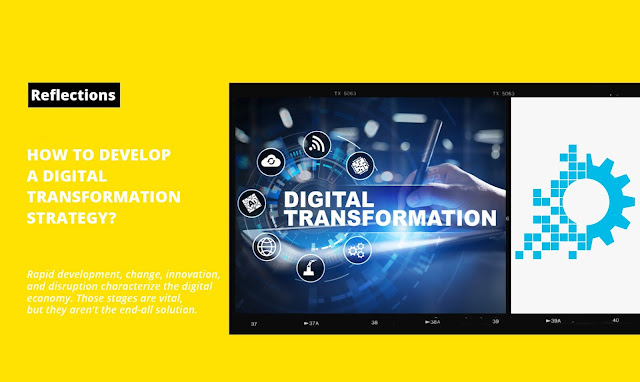Crafting an Effective Digital Transformation Strategy for Businesses
The digital landscape is in a perpetual state of evolution, marked by rapid development, continual change, innovation, and disruptive advancements. While these stages are pivotal, they do not serve as a comprehensive solution. For companies aiming to maintain a competitive edge, adapting to the dynamics of the new digital world is imperative. However, a successful digital transformation encompasses more than the mere implementation of new technology or the enhancement of existing processes. To truly stay ahead, reacting to changes isn’t sufficient – anticipation and driving innovation are essential. Companies must proactively plan and take an active role in creating their future to achieve sustainable success. A well-defined digital transformation strategy is instrumental in this pursuit.
Key Steps in Formulating a Digital Transformation Strategy
Securing Endorsement
Before embarking on building your digital transformation framework, obtaining top-level support is paramount. Without the buy-in and alignment of all key stakeholders, executing a strategy of this magnitude becomes a daunting task. Leadership plays a crucial role in communicating the company's objectives to the entire workforce. Cohesiveness within the team is pivotal; a fragmented approach can impede the progress of your digital transformation strategy right from its inception.
Financial Planning
Once the consensus is reached, it’s time to delve into the financial aspects. Assess the resources available for this venture. It's crucial to remember that digital transformation is a long-term commitment impacting every facet of the business. Your budget acts as a guiding force, aiding in setting priorities, delineating scope, and allocating resources effectively as you advance with the overarching strategy.
Assessing the Current State
Post securing buy-in and outlining a rough budget, the groundwork begins by evaluating your organization's current position. A clear understanding of the starting point is pivotal to chart the course ahead effectively.
Defining Objectives and Outcomes
With a comprehensive view of the present scenario, the focus shifts towards envisaging the future. What digital objectives do you aim to achieve? What are your end goals? Deliberate on the experiences you envision for both customers and employees. It’s imperative to keep sight of the broader perspective; a digital transformation strategy is geared towards accomplishing fundamental, long-term objectives. Dare to be ambitious and bold in your vision.
Conducting Gap Analysis
Having mapped out your present and future aspirations, it's time to identify the gaps and opportunities between these stages. This analysis serves as the bridge between your current standing and the envisioned future.
Developing the Transformation Blueprint
Armed with clear objectives and a comprehensive understanding of your organization's status, it’s time to construct a strategic plan. This plan serves as the roadmap to transition from your current position to your intended destination. It involves restructuring infrastructure, reskilling or attracting new talent, upgrading software frameworks, and adopting more agile development methodologies. The blueprint encompasses primary goals, intermediate milestones, key roles, priorities, and a timeline for each phase. Flexibility is key; the plan must evolve in tandem with organizational growth and changes in the digital landscape.
Innovation today transcends the mere introduction of new products or technologies. It revolves around leveraging unique capabilities within the broader ecosystem, constantly seeking novel possibilities, and creating valuable offerings. Preparing for this future landscape of ecosystem-centered innovation is crucial. Explore the array of innovation courses offered by MIT ID Innovation to hone your skill sets and prepare for the evolving digital terrain.


.jpg)
Comments
Post a Comment